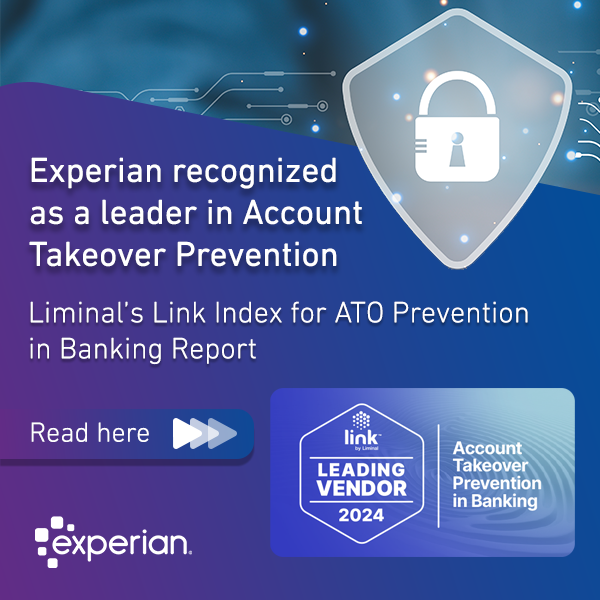As the demand for digital exploded over the past year, companies responded in kind. Those who were prepared rapidly scaled their digital capabilities to accommodate the sudden influx of customers. And those who were caught off guard? Many found themselves scrambling to meet the moment.

For both parties, the result has been an accelerated digital transformation that’s benefiting businesses and customers alike. The focus has been primarily on improving the front-facing customer experience. But as we look ahead, the dramatic shift toward digital has also opened up opportunities to enhance the security and authentication experience too.
By weaving authentication into the customer micro journey—the subsets of tasks that comprise the customer journey—we can strengthen security and decrease fraud. And the data collected along the way creates wholly new opportunities for personalization that improve the experience that much more.
A brittle solution
The most common authentication approach requires customers to create usernames and passwords and provide personal information to verify their identities. Customers increasingly expect that companies will require them to provide this personal information to secure their accounts. In fact, in a recent Experian survey, 45% of customers said they’d be willing to share more personal data with companies.
However, as long as passwords serve as the primary security tool, the approach remains vulnerable. First, it’s unlikely that companies would (or should) continuously ask customers to provide passwords and verify their identity at various stages in the customer journey. This means that there’s one big gate for fraudsters to scale and limited hurdles once they’ve gained access to an account.
Certainly, passwords are unique to an individual, which is a positive. But they’re also brittle, so they’re easily broken or compromised. They don’t flex with the user or the customer experience, nor do they offer security beyond a specific juncture. As we look to improve the customer experience continuously, we also need to provide end-to-end authentication. Doing so ensures you can recognize customers at every point of their journey, whether they’re logging in or checking out.
Securing the micro journey
An end-to-end approach requires an understanding of customer micro journeys. It’s not enough to provide a great digital experience, say via your account onboarding, but then have a completely different experience when a customer needs access to payment support. Considering micro journeys allows you to dive deeper into each component of the consumer lifecycle, and to understand the nuanced interactions that occur within each of those stages. Rather than just focusing on general approaches across Onboarding, Login Access, Transactions, etc., each one of these stages can be broken into smaller discrete steps (micro journeys), where opportunities exist to simultaneously delight the customer, and to create a much more nuanced risk management strategy. Then you can ensure that each task is seamless, easy, and personalized to the individual. Such a strategy can create deep and lasting customer loyalty.
And identification remains a crucial part of every micro journey. No one likes to be at a party and have the host ask them their name repeatedly. The concept applies to security as well. Passive or invisible approaches to authentication eliminate this friction. For example, companies can continually authenticate the customer by employing physical or behavioral biometrics as they progress through the journey. The technology considers: How does the customer hold their device? What time are they usually active? How much pressure do they apply to the screen?
Such data paints a much more nuanced picture of an individual—and one that’s exceptionally hard to impersonate. And while privacy concerns arise, the type of data required to authenticate customers in this way is far less intrusive than asking for personal information. Customers are increasingly amenable as well. In our research, consumers cited physical biometrics, OTP, and behavioral biometrics as their preferred authentication methods. Passwords didn’t even make the top 5.
A holistic approach
We’re at a point in which forward-looking companies can rethink the complicated security dance they’ve been asking customers to do and move toward a more passive approach. It’s an evolution that doesn’t just improve the security experience; it also opens up massive opportunities for increased personalization. The data gathered across these micro journeys enables you to design experiences that truly meet customers’ individual needs. That capability can become a significant differentiator and driver of growth.
Getting there, however, requires a holistic view of your customer experience—one that includes security as a critical element. Our past three research waves show organizations are starting to deprioritize fraud prevention in favor of customer care and online offerings. This is a concerning trend: companies cannot forgo one for the other.
Instead, organizations will need to consider both security and customer experience and creatively explore how to bring them together. It’s a long-term strategy for customer retention and growth, one that requires a deep understanding of your audience as well as the solutions needed to enable passive authentication. For organizations, the journey toward passive authentication as part of the customer experience is more of a marathon than a sprint. But by focusing now on melding recognition and the customer experience together, organizations can ensure they’re ready to deliver high-quality, less intrusive, and more secure experiences that customers are beginning to demand.
Related stories:




